
TOPIC | EMBEROIDS [Subspecies]
[center][size=1][url=https://www1.flightrising.com/forums/drs/2865089/1#post_2865089]Introduction[/url] - [url=https://www1.flightrising.com/forums/drs/2865089/1#post_43419919]Lore[/url] - [url=https://www1.flightrising.com/forums/drs/2865089/1#post_43420302]Genes[/url] - [url=https://www1.flightrising.com/forums/drs/2865089/1#post_43420406]Pairs[/url] - [url=https://www1.flightrising.com/forums/drs/2865089/1#post_43420409]Pinglist[/url] - [url=https://www1.flightrising.com/forums/drs/2865089/1#post_43420410]Banners & Affiliates[/url][/size][/center]
[center][img]https://i.imgur.com/R7xm8AQ.png[/img][/center]
-----
[center][columns][size=3]Designed by [url=https://flightrising.com/main.php?p=lair&id=488159&tab=dragon&did=60439510]Magma[/url]
A [s]simple[/s] project.
[url=https://docs.google.com/document/d/1aLISb7o8pnlgo02Sq8YinG0rQASKTCsK1ZFwRK79uKI/edit?usp=sharing]Magma's Laboratory Notes & User's Guide[/url]
[b][u]History:[/u][/b]
It seems a war has begun on the outside. Dear Temptress continually pesters me to create a new weapon and so I shall endeavor to please. I’ve needed a new project, anyway.
Overall Goal: Create a weapon that harnesses the power of a volcano.
But first, create a lava-like substance. Lava itself cools too quickly to be used if not heated constantly.
...
[i]Experiment 1:[/i]
Chemical created. Consistency similar to lava.
E.1: Fail
Chemical mixture too volatile and uncontainable.
Note 1: Refine mixture and create container material.
Note 2: Wear gloves. And a coat. And goggles, tinted ones.
-
[i]Experiment 10:[/i]
Mixture refinement successful. Container material created. Viability unknown.
E.10: Fail
Container material too sturdy for use as weapon. Unable to weaken container further without losing chemical. Not viable.
...
[i]Day 1, 510 days since last experiment:[/i]
Recent explorations have revealed past use of animated golems. Inspiration struck. Experiments resumed.
End result is unknown.
This will be the toughest project I have undertaken. I’ve known before I began, but only now accepted it.
I will succeed.
I must.
-
[i]Day 2:[/i]
[i]Experiment 1:[/i]
Container material molded into dragon shape.
Test species: Guardian. Best to start big, brother says.
E.1: Fail
Container material failed. Perhaps size is the issue.
Note: Construct stronger body and smaller chemical chamber.
-
[i]Day 33:[/i]
[i]Experiment 7:[/i]
Prototype created.
Model: Banescale.
Attributes: Smaller chemical chamber, sturdier body.
-
[i]Day 63:[/i]
E.7: Success
Note 1: Chemical either cools too quickly on wings or does not maintain desired consistency.
Note 2: Animation failed. Movements are odd and unbalanced, as if top heavy. Solution may be to use a four-legged breed.
-
[i]Day 120:
[/i]
[i]Experiment 9:[/i]
Quadruped (MODERN) prototype created.
Testing whole metal (METALLIC) and segmented metal (WASP) body.
Larger breed models in testing.
-
[i]Day 243: [/i]
Results from E.9 examined.
E.9: Fail
Note 1: Chemical cooling issue remains unsolved. Chemical causes orange stains on container material, interesting. When allowed to cool fully, chemical forms crystal-like coating.
Note 2: Chemical may cause severe overheating and cracking in container material after prolonged use. Cracks can cause dangerous chemical leaks, leading to fumes, sticky chemical getting everywhere, and hardened chemical pieces when cooled.
Note 3: Results show segmented metal body last longer. Perhaps the gaps in segments allow for heat to bleed out from the body, lengthening the container material’s life.
Note 4: Dear brother noticed the chemical in storage steadily rising in temperature. Container material appears to be caving to the heat. Interesting… perhaps a way to monitor the chemical will lead to prolonged unit life.
Size and balance issue appears to be solved, at least.
Further testing and refinement needed.
[i]Experiment 10:[/i]
Long term testing of five segmented body units equipped with viewable chemical chambers. Units referred to as Model X.
-
[i]Day 608:[/i]
Full year since creation of Model X.
One unit out of four suffered mild cracking on day 426. Cause of cracking identified as increase in chemical heat, chemical replaced, cracking repaired. Unit remains fully functional. Its failure provided insight to prevent cracking in the other four units.
E.10: Resounding Success
-
Additional Note:
All models respond well to enchantments. Temptress and Lava’s assistance proved units as effective weapons.
Maintenance requirements remain high. Perhaps that can be remedied with further testing. For now, this project will be considered complete.
Now, for a name… I, Magma, their creator, would simply love to dub them Magma’s Mechanical Marvels as they are just that. Brother and dear lady Temptress disagree. Such poor tastes, but alas I find myself outvoted. These marvelous creations shall be dubbed Emberoids, until I can change their minds.
...
Existing models include:
Emberoid PROTOTYPE
Emberoid MODEL X
Emberoid AI
...
One Year Later:
I, Magma, am both extremely angered and worried by a recent event. Several Emberoid MODEL X have seen battle, functioning marvelously under the control of magicians.
However, it appears other flights have taken interest. I had yet to decide whether to sell these creations or keep them within Fire Flight when one was so rashly stolen from my laboratory.
Fortunately, only one Emberoid PROTOTYPE was stolen; though sadly, it was the very first of them.
...
Six Months Later:
Further experiments have yielded various successful results. Emberoids modeled after all breeds are now available for use and purchase, and after further study more variants are now available.
One variant of note are Rune Emberoids, otherwise called Emberoid AI. Dear Temptress has, with the help of a new friend, discovered how to imbue magic into the very foundation of a model. The resulting model requires more observation; however, early examinations reveal a more intelligent and almost sapient being. Further tests are being conducted to discover how intelligent and dragon-like these Emberoids are. Perhaps they can even learn to speak?[/size][/columns]
[columns][size=3][u][b]Emberoids in Battle:[/b][/u]
Emberoids are a formidable foe both in large and small numbers. They were first successfully used in the attacks on Clan Ironwell, razing towns and cities to the ground under the Temptress' orders.
The chemical within these machines is incredibly abrasive and toxic, especially in large amounts. Areas in which an Emberoid battled are often rendered uninhabitable to the point where the very soil burns those who tread on it.
Due to the durability of most models, it is extremely difficult and dangerous for a single dragon to defeat one alone, especially without knowledge on how Emberoids function and without proper weaponry. If fighting a group of Emberoids, it is best to attempt to separate them; simpler models cannot think for themselves, but those controlling them are quite skilled in making the units work as a team.
Emberoids can be crippled or slowed by attacking the joints; significant damage to a leg or wing could immobilize the unit, although it could easily be repaired if its owners manage to retrieve it.
Continuous battles against the Emberoids as well as access to the creator's knowledge lead to the discovery of a key weakness: the chemical chamber itself. Though the armor of an Emberoid is tough and incredibly difficult to pierce, the heat of the chemical often softens the skin around the chemical chamber. A well placed strike in the belly* can rupture the chamber, depriving the Emberoid of its crucial chemical contents.
However, one must strike hard and fast and create a large enough wound to kill the unit within several seconds. Furthermore, when fighting a group of Emberoids, all of the units must be dispatched of swiftly after the first falls, preferably all at once. Failing to do so could lead to the spellcaster ordering the units to spontaneously explode, effectively destroying themselves while dealing a devastating blow to their enemies.
[i]*Note:[/i] Striking the belly works for many models, but not all. Units and models in which the chemical chamber is located elsewhere (ex. along the back for Gaoler Emberoids) are considerably more difficult to defeat. Armed with the ability to create a heat shield and cover nearly their entire bodies in the chemical, it typically takes several strong blows to reach and puncture the chamber. Even so, a puncture may not be lethal; a wound inflicted from above the unit would not be as effective as one inflicted from below.[/size][/columns]
[/center]
Introduction - Lore - Genes - Pairs - Pinglist - Banners & Affiliates

|
Designed by Magma A Magma's Laboratory Notes & User's Guide History: It seems a war has begun on the outside. Dear Temptress continually pesters me to create a new weapon and so I shall endeavor to please. I’ve needed a new project, anyway. Overall Goal: Create a weapon that harnesses the power of a volcano. But first, create a lava-like substance. Lava itself cools too quickly to be used if not heated constantly. ... Experiment 1: Chemical created. Consistency similar to lava. E.1: Fail Chemical mixture too volatile and uncontainable. Note 1: Refine mixture and create container material. Note 2: Wear gloves. And a coat. And goggles, tinted ones. - Experiment 10: Mixture refinement successful. Container material created. Viability unknown. E.10: Fail Container material too sturdy for use as weapon. Unable to weaken container further without losing chemical. Not viable. ... Day 1, 510 days since last experiment: Recent explorations have revealed past use of animated golems. Inspiration struck. Experiments resumed. End result is unknown. This will be the toughest project I have undertaken. I’ve known before I began, but only now accepted it. I will succeed. I must. - Day 2: Experiment 1: Container material molded into dragon shape. Test species: Guardian. Best to start big, brother says. E.1: Fail Container material failed. Perhaps size is the issue. Note: Construct stronger body and smaller chemical chamber. - Day 33: Experiment 7: Prototype created. Model: Banescale. Attributes: Smaller chemical chamber, sturdier body. - Day 63: E.7: Success Note 1: Chemical either cools too quickly on wings or does not maintain desired consistency. Note 2: Animation failed. Movements are odd and unbalanced, as if top heavy. Solution may be to use a four-legged breed. - Day 120: Experiment 9: Quadruped (MODERN) prototype created. Testing whole metal (METALLIC) and segmented metal (WASP) body. Larger breed models in testing. - Day 243: Results from E.9 examined. E.9: Fail Note 1: Chemical cooling issue remains unsolved. Chemical causes orange stains on container material, interesting. When allowed to cool fully, chemical forms crystal-like coating. Note 2: Chemical may cause severe overheating and cracking in container material after prolonged use. Cracks can cause dangerous chemical leaks, leading to fumes, sticky chemical getting everywhere, and hardened chemical pieces when cooled. Note 3: Results show segmented metal body last longer. Perhaps the gaps in segments allow for heat to bleed out from the body, lengthening the container material’s life. Note 4: Dear brother noticed the chemical in storage steadily rising in temperature. Container material appears to be caving to the heat. Interesting… perhaps a way to monitor the chemical will lead to prolonged unit life. Size and balance issue appears to be solved, at least. Further testing and refinement needed. Experiment 10: Long term testing of five segmented body units equipped with viewable chemical chambers. Units referred to as Model X. - Day 608: Full year since creation of Model X. One unit out of four suffered mild cracking on day 426. Cause of cracking identified as increase in chemical heat, chemical replaced, cracking repaired. Unit remains fully functional. Its failure provided insight to prevent cracking in the other four units. E.10: Resounding Success - Additional Note: All models respond well to enchantments. Temptress and Lava’s assistance proved units as effective weapons. Maintenance requirements remain high. Perhaps that can be remedied with further testing. For now, this project will be considered complete. Now, for a name… I, Magma, their creator, would simply love to dub them Magma’s Mechanical Marvels as they are just that. Brother and dear lady Temptress disagree. Such poor tastes, but alas I find myself outvoted. These marvelous creations shall be dubbed Emberoids, until I can change their minds. ... Existing models include: Emberoid PROTOTYPE Emberoid MODEL X Emberoid AI ... One Year Later: I, Magma, am both extremely angered and worried by a recent event. Several Emberoid MODEL X have seen battle, functioning marvelously under the control of magicians. However, it appears other flights have taken interest. I had yet to decide whether to sell these creations or keep them within Fire Flight when one was so rashly stolen from my laboratory. Fortunately, only one Emberoid PROTOTYPE was stolen; though sadly, it was the very first of them. ... Six Months Later: Further experiments have yielded various successful results. Emberoids modeled after all breeds are now available for use and purchase, and after further study more variants are now available. One variant of note are Rune Emberoids, otherwise called Emberoid AI. Dear Temptress has, with the help of a new friend, discovered how to imbue magic into the very foundation of a model. The resulting model requires more observation; however, early examinations reveal a more intelligent and almost sapient being. Further tests are being conducted to discover how intelligent and dragon-like these Emberoids are. Perhaps they can even learn to speak? |
|
Emberoids in Battle: Emberoids are a formidable foe both in large and small numbers. They were first successfully used in the attacks on Clan Ironwell, razing towns and cities to the ground under the Temptress' orders. The chemical within these machines is incredibly abrasive and toxic, especially in large amounts. Areas in which an Emberoid battled are often rendered uninhabitable to the point where the very soil burns those who tread on it. Due to the durability of most models, it is extremely difficult and dangerous for a single dragon to defeat one alone, especially without knowledge on how Emberoids function and without proper weaponry. If fighting a group of Emberoids, it is best to attempt to separate them; simpler models cannot think for themselves, but those controlling them are quite skilled in making the units work as a team. Emberoids can be crippled or slowed by attacking the joints; significant damage to a leg or wing could immobilize the unit, although it could easily be repaired if its owners manage to retrieve it. Continuous battles against the Emberoids as well as access to the creator's knowledge lead to the discovery of a key weakness: the chemical chamber itself. Though the armor of an Emberoid is tough and incredibly difficult to pierce, the heat of the chemical often softens the skin around the chemical chamber. A well placed strike in the belly* can rupture the chamber, depriving the Emberoid of its crucial chemical contents. However, one must strike hard and fast and create a large enough wound to kill the unit within several seconds. Furthermore, when fighting a group of Emberoids, all of the units must be dispatched of swiftly after the first falls, preferably all at once. Failing to do so could lead to the spellcaster ordering the units to spontaneously explode, effectively destroying themselves while dealing a devastating blow to their enemies. *Note: Striking the belly works for many models, but not all. Units and models in which the chemical chamber is located elsewhere (ex. along the back for Gaoler Emberoids) are considerably more difficult to defeat. Armed with the ability to create a heat shield and cover nearly their entire bodies in the chemical, it typically takes several strong blows to reach and puncture the chamber. Even so, a puncture may not be lethal; a wound inflicted from above the unit would not be as effective as one inflicted from below. |
[center][size=1][url=https://www1.flightrising.com/forums/drs/2865089/1#post_2865089]Introduction[/url] - [url=https://www1.flightrising.com/forums/drs/2865089/1#post_43419919]Lore[/url] - [url=https://www1.flightrising.com/forums/drs/2865089/1#post_43420302]Genes[/url] - [url=https://www1.flightrising.com/forums/drs/2865089/1#post_43420406]Pairs[/url] - [url=https://www1.flightrising.com/forums/drs/2865089/1#post_43420409]Pinglist[/url] - [url=https://www1.flightrising.com/forums/drs/2865089/1#post_43420410]Banners & Affiliates[/url][/size][/center]
[center][img]https://i.imgur.com/znKDmfZ.png[/img][/center]
-----
[img]https://i.imgur.com/wYdutTs.png[/img]
[img]https://i.imgur.com/M7318Rp.png[/img]
[img]https://i.imgur.com/qvCgMei.png[/img]
[img]https://i.imgur.com/ziovP7D.png[/img]
-----
[center][u][b]Gene Lore:[/b][/u]
[b]Primary Genes:[/b]
[center][item=Primary Gene: Metallic][item=Primary Gene: Metallic (Banescale)][/center]
[b]Metallic & Metallic (Banescale)[/b]
[columns][size=3]A simple, solid Metallic shell characterizes the earlier models as well as cheaper models of Emberoids. The solid shall allows for a thicker casing which is harder to damage, but similarly difficult to maintain. Units built with solid bodies are more prone to overheating and cracking than units built with segmented bodies.[/size][/columns]
[center][item=Primary Gene: Wasp][item=Primary Gene: Wasp (Gaoler)][item= Primary Gene: Wasp (Veilspun)][/center]
[b]Wasp, Wasp (Gaoler) & Wasp (Veilspun)[/b]
[columns][size=3]Segmented bodies were the result of further experimentation to solve the cracking issue in solid-bodied models, and are sometimes described as having a segmented structure similar to that of a Wasp. Less prone to overheating and cracking, these models tend to be lighter, faster, and more agile. However, they are not as capable of withstanding strong hits.[/size][/columns]
[b]Secondary Genes:[/b]
[center][item=Secondary Gene: Alloy][item=Secondary Gene: Alloy (Banescale)][/center]
[b]Alloy & Alloy (Banescale)[/b]
[columns][size=3]Though all Emberoids are constructed with a solid wing structure which the chemical can flow over, some Emberoid models were altered and built with thicker wings. Instead of boasting vents to spew chemical over their wings, Emberoids with Alloy instead using the chemical to heat up the surface of their wings until the wings glow orange. These models are better suited in close combat with a team; they are a lower risk to those fighting alongside them. However, the increased weight and stiffness of the wings make these Emberoids cumbersome in the air.[/size][/columns]
[center][item=Secondary Gene: Facet][item=Secondary Gene: Facet (Gaoler)][/center]
[b]Facet & Facet (Gaoler)[/b]
[columns][size=3]Originally, the hardening chemical posed an issue that needed to be solved. Caused by uneven wing heating on malfunctioning models, one scientist eventually saw potential in the hardened chemical. After experimentation, the scientist found that, despite looking like glass, the hardened material was quite durable and sturdy. Able to be molded for both offensive and defensive purposes, new models were eventually created to utilize the hardened chemical. Similar to Alloy, these units fight primarily by heating up their wings rather than spraying chemical over them; though, unlike Alloy, Facet winged Emberoids are built with wing vents which allow them to both spray chemical from their wings after taking enough damage and repair damage to themselves. Unfortunately, the stiffness and weight of the hardened chemical make it nearly impossible for Facet winged Emberoids to fly.[/size][/columns]
[center][item=Secondary Gene: Mottle (Banescale)][/center]
[b]Mottle (Banescale)[/b]
[columns][size=3]Banescale Emberoids, being primarily aerial fighters, have wings designed a little differently. The wings are created using a strong but more flexible material. The chemical's heat, as well as the stretching and contacting the material, undergoes while in use leads to the Mottling effect seen on the edges of the wings.[/size][/columns]
[center][item=Secondary Gene: Sludge][/center]
[b]Sludge[/b]
[columns][size=3]The production of Emberoids was plagued with many issues, one of the most major being the consistency of the chemical itself as it flowed over the wing. Experiments eventually showed a Sludge-like consistency as the most effective, and as such most Emberoids now use the liquid fire created with the revamped chemical formula.[/size][/columns]
[center][item=Secondary Gene: Toxin][item=Secondary Gene: Toxin (Banescale)][/center]
[b]Toxin & Toxin (Banescale)[/b]
[columns][size=3]Toxin winged Emberoids are among the most faulty, dangerous, and difficult to use. The markings associated with this malfunction come from two separate circumstances. Lighter markings simply mean that the chemical's consistency is too thin, the chemical's temperature is too hot, or the vents have malfunctioned and shot the chemical out too quickly. While hazardous to those around the Emberoid, this generally does not pose a threat to the Emberoid itself. The second and more severe issue are darker markings. Caused by the chemical temperature being too low, the chemical may form thick and hardening globs on the wings. Should the cooled portions remain on the wings, then no harm is done. However, in extreme cases, the chemical may cool close to the vents themselves, leading to crippling damage to the Emberoid's wings. While still usable, Toxin winged Emberoids must be monitored and maintained far more than the less defective models.[/size][/columns]
[center][item=Secondary Gene: Vivid (Veilspun)][/center]
[b]Vivid (Veilspun)[/b]
[columns][size=3]LORE WIP[/size][/columns]
[b]Tertiary Genes:[/b]
[center][item=Tertiary Gene: Capsule][item=Tertiary Gene: Capsule (Veilspun)][/center]
[b]Capsule[/b]
[columns][size=3]In an attempt to find the cause of overheating and cracking issues that plagued early models, several experiments were conducted with Emberoids built with a visible chemical Capsule. This allowed the chemical within to be monitored and remains one of the most popular models due to the ease of maintenance. These Emberoids have their chemical chambers in their belly and, in some cases, extending to the unit's neck and tail.[/size][/columns]
[center][item= Tertiary Gene: Circuit][/center]
[b]Circuit[/b]
[columns][size=3]Circuit Emberoids are a new model, developed to increase effectiveness. These Emberoids do not have a large chemical chamber - in some cases having none at all - instead storing the chemical in a series of veins. As a result, cracking and leaks are both less common and easier to fix.[/size][/columns]
[center][item=Tertiary Gene: Crackle][item=Tertiary Gene: Crackle (Banescale)][item=Tertiary Gene: Crackle (Veilspun)][/center]
[b]Crackle & Crackle (Banescale)[/b]
[columns][size=3]These Embeoids are often the result of a malfunction, lack of proper maintenance, or severe damage in battle. In these cases, the chemical overheats and cracks the shell, splattering all over the unit's body with a Crackling noise. Often, the chemical splashes to the surroundings as well.[/size][/columns]
[center][item=Tertiary Gene: Flecks (Veilspun)][/center]
[b]Flecks (Veilspun)[/b]
[columns][size=3]LORE WIP[/size][/columns]
[center][item=Tertiary Gene: Gembond][/center]
[b]Gembond[/b]
[columns][size=3]Similar to the dark-spotted Toxin Emberoids, the Gembonds are created by the chemical cooling on various parts of the unit's body. As long as the cooling does not occur near vital areas such as the wing vents, the hardened chemical may be a boon to the Emberoid. As it is very hard, it can almost be like an extra layer of armor, and with skillful maintenance can be molded.[/size][/columns]
[center][item=Tertiary Gene: Glimmer][/center]
[b]Glimmer[/b]
[columns][size=3]In early models, the Glimmering belly of an Emberoid usually meant it was too late; the unit has overheated and sustained some sort of damage, even if cracking is not yet visible. Newer models, however, are more similar to Capsule Emberoids. The Glimmering area around the chemical chamber can be utilized to monitor the chemical's health.[/size][/columns]
[center][item=Tertiary Gene: Opal][item=Tertiary Gene: Opal (Gaoler)][Item=Tertiary Gene: Opal (Veilspun)][/center]
[b]Opal & Opal (Gaoler)[/b]
[columns][size=3]Though the Opal markings look similar in principle to Gembond and Keel, it is in fact rather different. Functioning more like Capsule and Glimmer, Opal provides windows through which the chemical within can be monitored. It is most useful on newer models where the chemical chamber may not be located on the stomach.[/size][/columns]
[center][item= Tertiary Gene: Runes][item= Tertiary Gene: Runes (Gaoler)][Item=Tertiary Gene: Runes (Veilspun)][/center]
[b]Runes & Runes (Gaoler)[/b]
[columns][size=3]Another new type, Rune Emberoids are fundamentally different from their non-Rune relatives. The glowing runes are, in fact, not caused by the chemical within; instead it is caused by enchantments applied early in the building process. The resulting Emberoid model, when made correctly, is more intelligent and dragon-like than their robotic cousins, able to think and plan to some degree. Experiments are being conducted to attempt to teach one to speak.[/size][/columns]
[center][item=Tertiary Gene: Scorpion (Gaoler)][/center]
[b]Scorpion (Gaoler)[/b]
[columns][size=3]A newer addition, Scorpions are true to their names. Usable only with Gaoler Emberoids that have their chemical chambers along the back, the chemical is instead used to create a burning hot exoskeleton. This exoskeleton extends down the Emberoid's tail and, like a real scorpion, Emberoids equipped with this often use their tails to lash out at opponents.[/size][/columns]
[center][item=Tertiary Gene: Shardflank (Gaoler)][/center]
[b]Shardflank (Gaoler)[/b]
[columns][size=3]Created via a similar method as Keel, Shardflank is by far the more extreme version. Instead of molding the chemical into serrated scale-like protrusions, the chemical is instead shaped to form long and sharp spikes adorning the unit's shoulders, back, and hips. Models with Shardflank can be notoriously difficult to defeat; opponents risk getting impaled when coming too close, and these Emberoids are often sent to the thick of battle by their enchanters.[/size][/columns]
[center][item=Tertiary Gene: Veined][item=Tertiary Gene: Veined (Gaoler)][/center]
[b]Veined & Veined (Gaoler)[/b]
[columns][size=3]Despite continuous improvements and experiments, cracking remains an issue with all Emberoid models. Though preventable with proper maintenance, damage in battle can cause or accelerate the cracking process.[/size][/columns]
[center][item=Tertiary Gene: Wraith (Banescale)][/center]
[b]Wraith[/b]
[columns][size=3]Some newer Banescale models spew chemical not just from their wings, but also from their legs and tails. Known as some of the most effective but costly models, these Emberoids are known as Wraiths. Often, they are one of the last things an opponent will see.[/size][/columns]
-----
[u][b]Breed Lore:[/b][/u]
[center][img]https://www1.flightrising.com/dgen/preview/dragon?age=1&body=10&bodygene=49&breed=18&element=11&eyetype=0&gender=0&tert=48&tertgene=48&winggene=53&wings=48&auth=cf78353489eda7b0e70ac0968438bfe4fa2b43ac&dummyext=prev.png[/img][/center]
[b]Banescales:[/b]
[columns][size=3]Banescale Emberoids, though initially faulty, are now amongst the most effective. They are by far the best models for aerial combat due to weight and size. The lack of forelegs which initially created balancing issues on the ground in fact creates a more aerodynamic and efficient flyer. Most Banescale Emberoids are created with a thicker metal plate on their chests to protect the chemical chamber from extreme damage. However, these Emberoids remain incredibly ineffective and vulnerable on the ground.
Pair: Acquired [Hadaly x Clunk][/size][/columns]
[center][img]https://www1.flightrising.com/dgen/preview/dragon?age=1&body=10&bodygene=28&breed=17&element=11&eyetype=0&gender=0&tert=48&tertgene=26&winggene=37&wings=48&auth=0abf6d6319a410ab2e3db6bd93e9136941fbb652&dummyext=prev.png[/img][/center]
[b]Gaolers:[/b]
[columns][size=3]Gaoler Emberoids are often referred to as offensive tanks. Certain designs such as Shardflank allow these models to slice through opponents, while their bulk allows them to withstand hits that would cripple or destroy other Emberoid models. Gaoler Emberoids are fundamentally different; among the last to be created, their chemical chamber sits along their neck and back instead of belly. This simple change in design makes Gaoler Emberoids far more effective. They are capable of creating a heat shield to protect themselves from aerial attacks.
Pair: Acquired [Rodomont x Beast][/size][/columns]
[center][img]https://www1.flightrising.com/dgen/preview/dragon?age=1&body=10&bodygene=71&breed=19&element=11&eyetype=0&gender=0&tert=48&tertgene=68&winggene=69&wings=48&auth=ebe1c46934b09888fb9a22b06566ab6f4fc2a740&dummyext=prev.png[/img][/center]
[b]Veilspuns:[/b]
[columns][size=3]LORE WIP
Pair: In Progress
Other [ILOVEYOU x Morris (Owned by Alyzeh)][/size][/columns]
[center][img]https://www1.flightrising.com/dgen/preview/dragon?age=1&body=10&bodygene=17&breed=1&element=9&eyetype=3&gender=1&tert=48&tertgene=18&winggene=41&wings=48&auth=249cc919b161816982f071811694b0f7b271370e&dummyext=prev.png[/img][/center]
[b]Faes:[/b]
[columns][size=3]Fae Emberoids are among the most useful models, but also some of the most inefficient and difficult to make. Despite this, they remain one of the most commonly produced models. Too small to be of any use as a physical fighter, these models fall into two tasks. Their small size makes them ideal hidden weapons and long-range fighters; however, Fae Emberoids are more commonly created to be land mines and bombs. Yes, they explode.
[i]Note: All Emberoids can explode, but Fae Emberoids are the most commonly used for this purpose.[/i]
Pair: Acquired [Olimpia x Ratcher]
Other [Firewall x Talus (Owned by Alyzeh)][/size][/columns]
[center][img]https://www1.flightrising.com/dgen/preview/dragon?age=1&body=10&bodygene=20&breed=2&element=11&eyetype=0&gender=1&tert=48&tertgene=18&winggene=12&wings=133&auth=3ce4c63002197ce1cc784ac53b0d54f1576f713a&dummyext=prev.png[/img][/center]
[b]Guardians:[/b]
[columns][size=3]Guardian Emberoids are among the most common and popular models. Their large size makes them extremely imposing, and their versatility makes them useful. However, Guardian Emberoids tend to be jacks of all trades and masters of none. As such, they remain one of the cheapest models to purchase despite their fierce appearance.
Pair: Acquired [Olimpia x Ratcher; Valeria x Klapaucius (unofficial)][/size]
Other [Firewall x Talus (Owned by Alyzeh)][/columns]
[center][img]https://www1.flightrising.com/dgen/preview/dragon?age=1&body=10&bodygene=20&breed=3&element=11&eyetype=0&gender=1&tert=48&tertgene=18&winggene=41&wings=48&auth=60df50cbc73468b15e55b32d33bfac2485cb450a&dummyext=prev.png[/img][/center]
[b]Mirrors:[/b]
[columns][size=3]Mirror Emberoids are the cavalry of the group. As effective on land as the Banescale models are in the air, Mirror Emberoids are sent out to battle in packs and waves. Though small, these models can be enchanted to work together to bring down large opponents. Mirror Emberoids most often fight using their flaming wings rather than spitting the chemical.
Pair: TBD [Ria x Roast][/size][/columns]
[center][img]https://www1.flightrising.com/dgen/preview/dragon?age=1&body=10&bodygene=20&breed=6&element=11&eyetype=0&gender=0&tert=48&tertgene=18&winggene=41&wings=48&auth=b5bba49f3df6578ec3ebf4144d1e7698bfff8e10&dummyext=prev.png[/img][/center]
[b]Tundras:[/b]
[columns][size=3]Tundra Emberoids are a useful model. Often commanded to form a defensive line, Tundra Emberoids surround the spellcaster as well as other vital models like Snappers. Their main attack comes from spitting waves of chemical at any opponents who dare to approach their defensive line.
Pair: Acquired [Ria x Roast][/size][/columns]
[center][img]https://www1.flightrising.com/dgen/preview/dragon?age=1&body=10&bodygene=20&breed=4&element=11&eyetype=0&gender=0&tert=48&tertgene=18&winggene=41&wings=48&auth=23a69951eaaeecf728f8d0975b889e04289aeaf6&dummyext=prev.png[/img][/center]
[b]Pearlcatcher:[/b]
[columns][size=3]Pearlcatcher Emberoids, at least the original models, are one of the rarest. They are about as useful in physical battles as Fae Emberoids, but they lack the small size that makes the Fae models so deadly. Pearlcatcher Emberoids are often used as status symbols, decorations, or glorified furnaces.
However, a new model of Pearlcatcher Emberoids come with the ability to fill their pearl with chemical and fling it at opponents. This essentially gives them a decent amount of explosive power without the need to self-destruct. These models can attack from afar and above, making them rather useful and more common. They are also often used as castle guards, placed in high areas and activated to defend the castle by raining fire on enemies below.
Pair: Acquired [Pearlcatcher x Cyl][/size][/columns]
[center][img]https://www1.flightrising.com/dgen/preview/dragon?age=1&body=10&bodygene=20&breed=5&element=11&eyetype=0&gender=1&tert=48&tertgene=18&winggene=41&wings=48&auth=7062923d17296bad3fbbd10021d8668ac64caa08&dummyext=prev.png[/img][/center]
[b]Ridgeback:[/b]
[columns][size=3]Ridgeback Emberoids are like Guardian Emberoids given an upgrade. Bigger, heavier, and all the more dangerous, Ridgeback Emberoids are the kings of the battlefield. Their outer shell is thick and covered with brutally sharp spines. Getting close to one in battle never ends well for the unit's opponent. Similar to real Ridgebacks, Ridgeback Emberoids can be just as deadly to their allies, forcing the magicians to keep other Emberoids or any living dragons away from the Ridgeback unit while in battle. However, another flaw of Ridgeback Emberoids comes from one of their greatest strengths. The thick, heavy armor making up their near-impenetrable skin makes them slow both on land and in the air.
Pair: Acquired [Sheen x Firethroat][/size][/columns]
[center][img]https://www1.flightrising.com/dgen/preview/dragon?age=1&body=10&bodygene=20&breed=9&element=11&eyetype=0&gender=0&tert=48&tertgene=18&winggene=41&wings=48&auth=9241d88980902218f97c26663ccad291138000d8&dummyext=prev.png[/img][/center]
[b]Snapper:[/b]
[columns][size=3]Snapper Emberoids are the true tanks. Unlike all the other Emberoid models, Snapper Emberoids have no outstanding physical fighting ability. Their attacks consist of brutish snapping and blasting messy streams of chemical, but their true strength lies in their use. Snapper Emberoids are the heaviest of them all and are the only truly flightless model. Built sturdier than Gaoler Emberoids, their main function is to carry supplies into battle. Often, they serve as chemical canisters from which other Emberoids can refill their chemical chambers.
Pair: Acquired [Pearlcatcher x Cyl][/size][/columns]
[center][img]https://www1.flightrising.com/dgen/preview/dragon?age=1&body=10&bodygene=17&breed=7&element=11&eyetype=0&gender=0&tert=48&tertgene=18&winggene=8&wings=133&auth=4d9cd11a4eab74ef870368daa7bd807d0b45ea42&dummyext=prev.png[/img][/center]
[b]Spiral:[/b]
[columns][size=3]Spiral Emberoids are by far the most difficult to design and build. They are also the most effective long-range Emberoid model, though are rather inefficient in long fights. Light-weight, small, and agile, Spiral Emberoids are notoriously hard to hit while in flight. Mainly used to do quick hit and runs, Spiral Emberoids will speed towards any opponent and spit a barrage of chemical before fleeing to a safe distance. However, their small size and odd shape means they have a smaller chemical chamber. Thus, Spiral Emberoids need to refuel the most often, though this flaw can be minimized in longer lasting battles by using several Spiral Emberoids in rotation.
Pair: Acquired [Sheen x Firethroat][/size][/columns]
[center][img]https://www1.flightrising.com/dgen/preview/dragon?age=1&body=10&bodygene=17&breed=14&element=11&eyetype=1&gender=1&tert=48&tertgene=18&winggene=41&wings=48&auth=765c115e61b767254688c25dd1e23b0c0ce16ce0&dummyext=prev.png[/img][/center]
[b]Bogsneaks:[/b]
[columns][size=3]Bogsneak Emberoids are created for stealth. They are, by far, the sleekest and quietest models, often laying flat to hide the glow of the chemical chamber or hiding within or around lava pools. Though they look sturdy, Bogsneak Emberoids are among the frailest; only Spiral and Fae Emberoids are considered weaker defensively. Such was the cost of their silence and stealth, but their thin armor hardly matters. Bogsneak Emberoids are most effective in indirect battles with a specific target; the target often won't know the unit is there until it is too late.
Pair: Acquired [Tera x Giga][/size][/columns]
[center][img]https://www1.flightrising.com/dgen/preview/dragon?age=1&body=10&bodygene=20&breed=13&element=11&eyetype=1&gender=0&tert=48&tertgene=4&winggene=17&wings=48&auth=d8866f03ba3bf0a1b9a9cab259725a1a36798167&dummyext=prev.png[/img][/center]
[b]Skydancers:[/b]
[columns][size=3]Skydancer Emberoids are similar to Banescale, Spiral, Bogsneak, and Nocturne Emberoids in build and purpose. They are built with a thinner shell, and are not meant for head on combat. Skydancer Emberoids function most similarly to Spiral Emberoids, both fulfill the role of long range fighters, though Skydancer Emberoids are far better suited to long battles. However, while Skydancer Emberoids have the endurance to last and the speed to zip between aerial opponents, they lack the physical power of the Banescale Emberoids and the agility of the Spiral Emberoids.
Pair: Acquired [Tera x Giga][/size][/columns]
[center][img]https://www1.flightrising.com/dgen/preview/dragon?age=1&body=10&bodygene=20&breed=8&element=11&eyetype=0&gender=0&tert=48&tertgene=18&winggene=41&wings=48&auth=4813108d192da81678e965842898770c228e35db&dummyext=prev.png[/img][/center]
[b]Imperials:[/b]
[columns][size=3]Imperial Emberoids are built with the largest chemical chambers of all Emberoids; larger, even, than the chambers of Snapper Emberoids. In fact, it can take two or more full Snapper Emberoids to refill one Imperial Emberoid. Though large, they aren't as ineffective in the air as real Imperials. It's true that they aren't agile, but when forced to fight in the air, an Imperial Emberoid will simply choose to empty its chemical chamber and rain liquid fire on its opponents. When fighting on the ground, Imperial Emberoids vary in tactics, using their wings and tails to smash opponents to the ground while using their breath to burn what they cannot hit.
Pair: Acquired [Blitz x Blaise][/size][/columns]
[center][img]https://www1.flightrising.com/dgen/preview/dragon?age=1&body=10&bodygene=20&breed=11&element=11&eyetype=0&gender=1&tert=48&tertgene=18&winggene=41&wings=48&auth=4d9701e15b6ec0788c9c9cc3f458a5ebd1e124c8&dummyext=prev.png[/img][/center]
[b]Nocturnes:[/b]
[columns][size=3]Nocturne Emberoids are the sneaky spies of the models. Almost as quiet as the deadly Bogsneak Emberoids, Nocturne Emberoids are built with a special audio recorder, allowing these units to infiltrate enemy areas and gather useful information. However, using Nocturne Emberoids is risky; as with all Emberoid models, they are controlled by a magician who must remain within a certain range. Furthermore, Nocturne Emberoids are not built for battle. Their chemical chamber is only just larger than that of Fae and Spiral Emberoids, and similar to Bogsneak Emberoids, they have a thinner shell to allow for stealth.
Pair: Acquired [Blitz x Blaise][/size][/columns]
[center][img]https://www1.flightrising.com/dgen/preview/dragon?age=1&body=10&bodygene=20&breed=12&element=6&eyetype=0&gender=0&tert=48&tertgene=10&winggene=41&wings=48&auth=89aef1bf4432c2f117eb0def7de283a5d3a973c1&dummyext=prev.png[/img][/center]
[b]Coatls:[/b]
[columns][size=3]Coatl Emberoids are difficult to use. In a way, they are similar to Guardian Emberoids - jacks of all trades and masters of none - but everything a Coatl Emberoid can do, a Guardian Emberoid can do better. Their main advantage is their size. Being smaller, they are less useful in large scale battles but perform far better in cramped quarters than larger models do, thus making Coatl Emberoids excellent personal guards.
Pair: Acquired [Mikun x Trurl][/size][/columns]
[center][img]https://www1.flightrising.com/dgen/preview/dragon?age=1&body=10&bodygene=20&breed=10&element=11&eyetype=0&gender=0&tert=48&tertgene=18&winggene=41&wings=48&auth=1564f6c8a3144337556095f5464334b0ab53b078&dummyext=prev.png[/img][/center]
[b]Wildclaws:[/b]
[columns][size=3]Wildclaw Emberoids are the queens of the battlefield as much as Ridgeback Emberoids are the kings. Small, quick, and deadly, they can easily do as much damage as a Ridgeback Emberoid thrice as fast, and work just as well as Mirror Emberoids do when fighting in a group. However, they are among the lightest in terms of armor, making them vulnerable to counter attacks.
Pair: Acquired [Mikun x Trurl][/size][/columns]
Introduction - Lore - Genes - Pairs - Pinglist - Banners & Affiliates





Gene Lore:
Primary Genes:
Metallic & Metallic (Banescale)
Wasp, Wasp (Gaoler) & Wasp (Veilspun)
Secondary Genes:
Alloy & Alloy (Banescale)
Facet & Facet (Gaoler)
Mottle (Banescale)
Sludge
Toxin & Toxin (Banescale)
Vivid (Veilspun)
Tertiary Genes:
Capsule
Circuit
Crackle & Crackle (Banescale)
Flecks (Veilspun)
Gembond
Glimmer
Opal & Opal (Gaoler)
Runes & Runes (Gaoler)
Scorpion (Gaoler)
Shardflank (Gaoler)
Veined & Veined (Gaoler)
Wraith
Breed Lore:
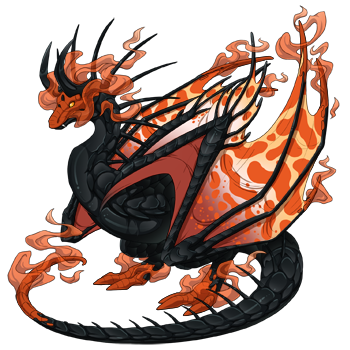 Banescales:
Banescales:
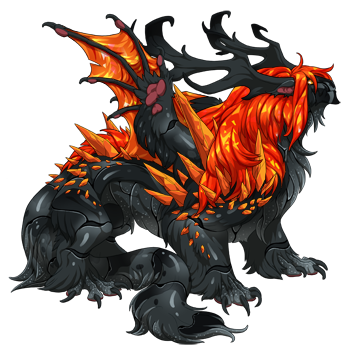 Gaolers:
Gaolers:
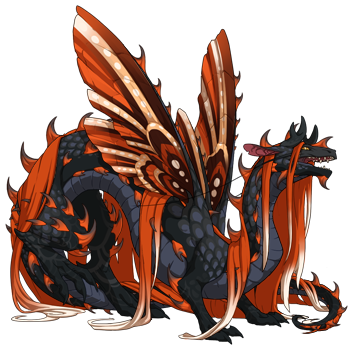 Veilspuns:
Veilspuns:
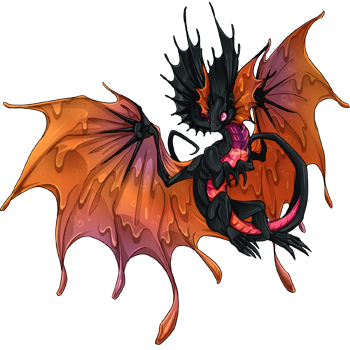 Faes:
Faes:
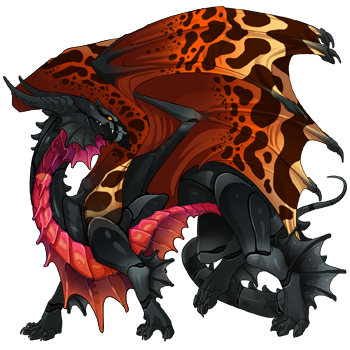 Guardians:
Guardians:
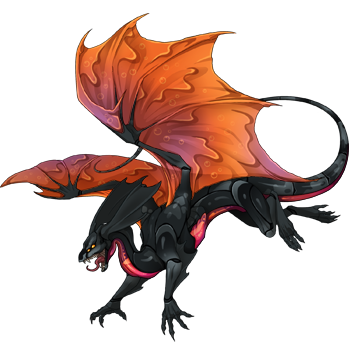 Mirrors:
Mirrors:
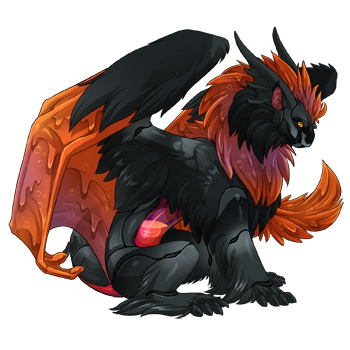 Tundras:
Tundras:
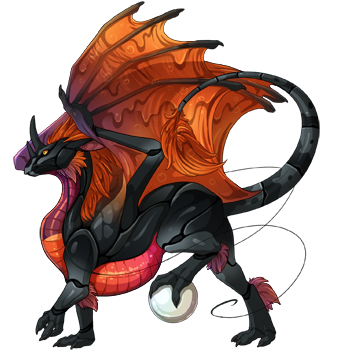 Pearlcatcher:
Pearlcatcher:
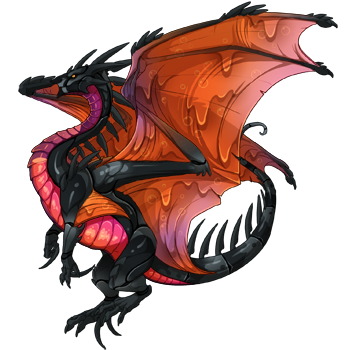 Ridgeback:
Ridgeback:
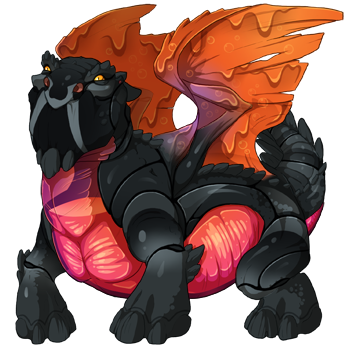 Snapper:
Snapper:
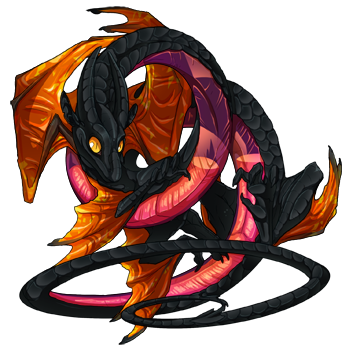 Spiral:
Spiral:
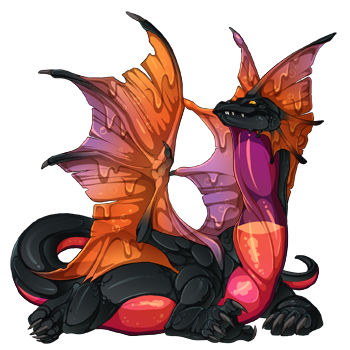 Bogsneaks:
Bogsneaks:
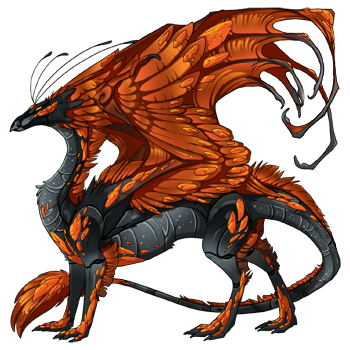 Skydancers:
Skydancers:
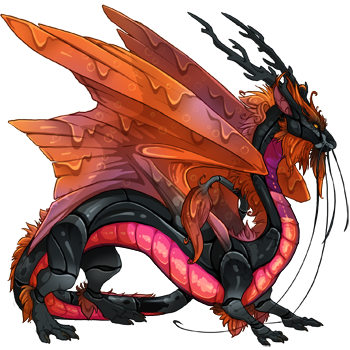 Imperials:
Imperials:
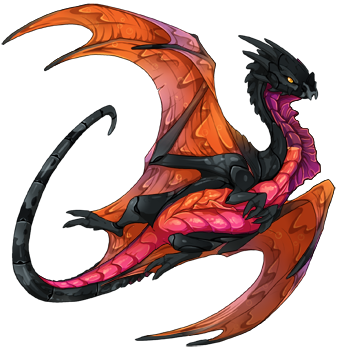 Nocturnes:
Nocturnes:
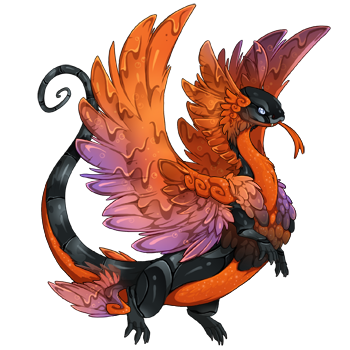 Coatls:
Coatls:
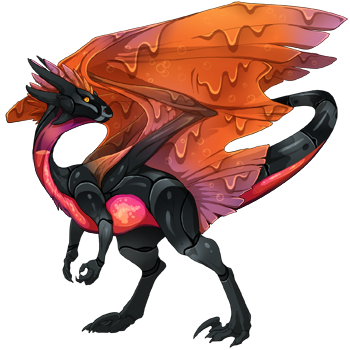 Wildclaws:
Wildclaws:
Primary Genes:
| A simple, solid Metallic shell characterizes the earlier models as well as cheaper models of Emberoids. The solid shall allows for a thicker casing which is harder to damage, but similarly difficult to maintain. Units built with solid bodies are more prone to overheating and cracking than units built with segmented bodies. |
| Segmented bodies were the result of further experimentation to solve the cracking issue in solid-bodied models, and are sometimes described as having a segmented structure similar to that of a Wasp. Less prone to overheating and cracking, these models tend to be lighter, faster, and more agile. However, they are not as capable of withstanding strong hits. |
Secondary Genes:
| Though all Emberoids are constructed with a solid wing structure which the chemical can flow over, some Emberoid models were altered and built with thicker wings. Instead of boasting vents to spew chemical over their wings, Emberoids with Alloy instead using the chemical to heat up the surface of their wings until the wings glow orange. These models are better suited in close combat with a team; they are a lower risk to those fighting alongside them. However, the increased weight and stiffness of the wings make these Emberoids cumbersome in the air. |
| Originally, the hardening chemical posed an issue that needed to be solved. Caused by uneven wing heating on malfunctioning models, one scientist eventually saw potential in the hardened chemical. After experimentation, the scientist found that, despite looking like glass, the hardened material was quite durable and sturdy. Able to be molded for both offensive and defensive purposes, new models were eventually created to utilize the hardened chemical. Similar to Alloy, these units fight primarily by heating up their wings rather than spraying chemical over them; though, unlike Alloy, Facet winged Emberoids are built with wing vents which allow them to both spray chemical from their wings after taking enough damage and repair damage to themselves. Unfortunately, the stiffness and weight of the hardened chemical make it nearly impossible for Facet winged Emberoids to fly. |
| Banescale Emberoids, being primarily aerial fighters, have wings designed a little differently. The wings are created using a strong but more flexible material. The chemical's heat, as well as the stretching and contacting the material, undergoes while in use leads to the Mottling effect seen on the edges of the wings. |
| The production of Emberoids was plagued with many issues, one of the most major being the consistency of the chemical itself as it flowed over the wing. Experiments eventually showed a Sludge-like consistency as the most effective, and as such most Emberoids now use the liquid fire created with the revamped chemical formula. |
| Toxin winged Emberoids are among the most faulty, dangerous, and difficult to use. The markings associated with this malfunction come from two separate circumstances. Lighter markings simply mean that the chemical's consistency is too thin, the chemical's temperature is too hot, or the vents have malfunctioned and shot the chemical out too quickly. While hazardous to those around the Emberoid, this generally does not pose a threat to the Emberoid itself. The second and more severe issue are darker markings. Caused by the chemical temperature being too low, the chemical may form thick and hardening globs on the wings. Should the cooled portions remain on the wings, then no harm is done. However, in extreme cases, the chemical may cool close to the vents themselves, leading to crippling damage to the Emberoid's wings. While still usable, Toxin winged Emberoids must be monitored and maintained far more than the less defective models. |
| LORE WIP |
Tertiary Genes:
| In an attempt to find the cause of overheating and cracking issues that plagued early models, several experiments were conducted with Emberoids built with a visible chemical Capsule. This allowed the chemical within to be monitored and remains one of the most popular models due to the ease of maintenance. These Emberoids have their chemical chambers in their belly and, in some cases, extending to the unit's neck and tail. |
| Circuit Emberoids are a new model, developed to increase effectiveness. These Emberoids do not have a large chemical chamber - in some cases having none at all - instead storing the chemical in a series of veins. As a result, cracking and leaks are both less common and easier to fix. |
| These Embeoids are often the result of a malfunction, lack of proper maintenance, or severe damage in battle. In these cases, the chemical overheats and cracks the shell, splattering all over the unit's body with a Crackling noise. Often, the chemical splashes to the surroundings as well. |
| LORE WIP |
| Similar to the dark-spotted Toxin Emberoids, the Gembonds are created by the chemical cooling on various parts of the unit's body. As long as the cooling does not occur near vital areas such as the wing vents, the hardened chemical may be a boon to the Emberoid. As it is very hard, it can almost be like an extra layer of armor, and with skillful maintenance can be molded. |
| In early models, the Glimmering belly of an Emberoid usually meant it was too late; the unit has overheated and sustained some sort of damage, even if cracking is not yet visible. Newer models, however, are more similar to Capsule Emberoids. The Glimmering area around the chemical chamber can be utilized to monitor the chemical's health. |
| Though the Opal markings look similar in principle to Gembond and Keel, it is in fact rather different. Functioning more like Capsule and Glimmer, Opal provides windows through which the chemical within can be monitored. It is most useful on newer models where the chemical chamber may not be located on the stomach. |
| Another new type, Rune Emberoids are fundamentally different from their non-Rune relatives. The glowing runes are, in fact, not caused by the chemical within; instead it is caused by enchantments applied early in the building process. The resulting Emberoid model, when made correctly, is more intelligent and dragon-like than their robotic cousins, able to think and plan to some degree. Experiments are being conducted to attempt to teach one to speak. |
| A newer addition, Scorpions are true to their names. Usable only with Gaoler Emberoids that have their chemical chambers along the back, the chemical is instead used to create a burning hot exoskeleton. This exoskeleton extends down the Emberoid's tail and, like a real scorpion, Emberoids equipped with this often use their tails to lash out at opponents. |
| Created via a similar method as Keel, Shardflank is by far the more extreme version. Instead of molding the chemical into serrated scale-like protrusions, the chemical is instead shaped to form long and sharp spikes adorning the unit's shoulders, back, and hips. Models with Shardflank can be notoriously difficult to defeat; opponents risk getting impaled when coming too close, and these Emberoids are often sent to the thick of battle by their enchanters. |
| Despite continuous improvements and experiments, cracking remains an issue with all Emberoid models. Though preventable with proper maintenance, damage in battle can cause or accelerate the cracking process. |
| Some newer Banescale models spew chemical not just from their wings, but also from their legs and tails. Known as some of the most effective but costly models, these Emberoids are known as Wraiths. Often, they are one of the last things an opponent will see. |
Breed Lore:

|
Banescale Emberoids, though initially faulty, are now amongst the most effective. They are by far the best models for aerial combat due to weight and size. The lack of forelegs which initially created balancing issues on the ground in fact creates a more aerodynamic and efficient flyer. Most Banescale Emberoids are created with a thicker metal plate on their chests to protect the chemical chamber from extreme damage. However, these Emberoids remain incredibly ineffective and vulnerable on the ground. Pair: Acquired [Hadaly x Clunk] |

|
Gaoler Emberoids are often referred to as offensive tanks. Certain designs such as Shardflank allow these models to slice through opponents, while their bulk allows them to withstand hits that would cripple or destroy other Emberoid models. Gaoler Emberoids are fundamentally different; among the last to be created, their chemical chamber sits along their neck and back instead of belly. This simple change in design makes Gaoler Emberoids far more effective. They are capable of creating a heat shield to protect themselves from aerial attacks. Pair: Acquired [Rodomont x Beast] |

|
LORE WIP Pair: In Progress Other [ILOVEYOU x Morris (Owned by Alyzeh)] |

|
Fae Emberoids are among the most useful models, but also some of the most inefficient and difficult to make. Despite this, they remain one of the most commonly produced models. Too small to be of any use as a physical fighter, these models fall into two tasks. Their small size makes them ideal hidden weapons and long-range fighters; however, Fae Emberoids are more commonly created to be land mines and bombs. Yes, they explode. Note: All Emberoids can explode, but Fae Emberoids are the most commonly used for this purpose. Pair: Acquired [Olimpia x Ratcher] Other [Firewall x Talus (Owned by Alyzeh)] |

|
Guardian Emberoids are among the most common and popular models. Their large size makes them extremely imposing, and their versatility makes them useful. However, Guardian Emberoids tend to be jacks of all trades and masters of none. As such, they remain one of the cheapest models to purchase despite their fierce appearance. Pair: Acquired [Olimpia x Ratcher; Valeria x Klapaucius (unofficial)] Other [Firewall x Talus (Owned by Alyzeh)] |

|
Mirror Emberoids are the cavalry of the group. As effective on land as the Banescale models are in the air, Mirror Emberoids are sent out to battle in packs and waves. Though small, these models can be enchanted to work together to bring down large opponents. Mirror Emberoids most often fight using their flaming wings rather than spitting the chemical. Pair: TBD [Ria x Roast] |

|
Tundra Emberoids are a useful model. Often commanded to form a defensive line, Tundra Emberoids surround the spellcaster as well as other vital models like Snappers. Their main attack comes from spitting waves of chemical at any opponents who dare to approach their defensive line. Pair: Acquired [Ria x Roast] |

|
Pearlcatcher Emberoids, at least the original models, are one of the rarest. They are about as useful in physical battles as Fae Emberoids, but they lack the small size that makes the Fae models so deadly. Pearlcatcher Emberoids are often used as status symbols, decorations, or glorified furnaces. However, a new model of Pearlcatcher Emberoids come with the ability to fill their pearl with chemical and fling it at opponents. This essentially gives them a decent amount of explosive power without the need to self-destruct. These models can attack from afar and above, making them rather useful and more common. They are also often used as castle guards, placed in high areas and activated to defend the castle by raining fire on enemies below. Pair: Acquired [Pearlcatcher x Cyl] |

|
Ridgeback Emberoids are like Guardian Emberoids given an upgrade. Bigger, heavier, and all the more dangerous, Ridgeback Emberoids are the kings of the battlefield. Their outer shell is thick and covered with brutally sharp spines. Getting close to one in battle never ends well for the unit's opponent. Similar to real Ridgebacks, Ridgeback Emberoids can be just as deadly to their allies, forcing the magicians to keep other Emberoids or any living dragons away from the Ridgeback unit while in battle. However, another flaw of Ridgeback Emberoids comes from one of their greatest strengths. The thick, heavy armor making up their near-impenetrable skin makes them slow both on land and in the air. Pair: Acquired [Sheen x Firethroat] |

|
Snapper Emberoids are the true tanks. Unlike all the other Emberoid models, Snapper Emberoids have no outstanding physical fighting ability. Their attacks consist of brutish snapping and blasting messy streams of chemical, but their true strength lies in their use. Snapper Emberoids are the heaviest of them all and are the only truly flightless model. Built sturdier than Gaoler Emberoids, their main function is to carry supplies into battle. Often, they serve as chemical canisters from which other Emberoids can refill their chemical chambers. Pair: Acquired [Pearlcatcher x Cyl] |

|
Spiral Emberoids are by far the most difficult to design and build. They are also the most effective long-range Emberoid model, though are rather inefficient in long fights. Light-weight, small, and agile, Spiral Emberoids are notoriously hard to hit while in flight. Mainly used to do quick hit and runs, Spiral Emberoids will speed towards any opponent and spit a barrage of chemical before fleeing to a safe distance. However, their small size and odd shape means they have a smaller chemical chamber. Thus, Spiral Emberoids need to refuel the most often, though this flaw can be minimized in longer lasting battles by using several Spiral Emberoids in rotation. Pair: Acquired [Sheen x Firethroat] |

|
Bogsneak Emberoids are created for stealth. They are, by far, the sleekest and quietest models, often laying flat to hide the glow of the chemical chamber or hiding within or around lava pools. Though they look sturdy, Bogsneak Emberoids are among the frailest; only Spiral and Fae Emberoids are considered weaker defensively. Such was the cost of their silence and stealth, but their thin armor hardly matters. Bogsneak Emberoids are most effective in indirect battles with a specific target; the target often won't know the unit is there until it is too late. Pair: Acquired [Tera x Giga] |

|
Skydancer Emberoids are similar to Banescale, Spiral, Bogsneak, and Nocturne Emberoids in build and purpose. They are built with a thinner shell, and are not meant for head on combat. Skydancer Emberoids function most similarly to Spiral Emberoids, both fulfill the role of long range fighters, though Skydancer Emberoids are far better suited to long battles. However, while Skydancer Emberoids have the endurance to last and the speed to zip between aerial opponents, they lack the physical power of the Banescale Emberoids and the agility of the Spiral Emberoids. Pair: Acquired [Tera x Giga] |

|
Imperial Emberoids are built with the largest chemical chambers of all Emberoids; larger, even, than the chambers of Snapper Emberoids. In fact, it can take two or more full Snapper Emberoids to refill one Imperial Emberoid. Though large, they aren't as ineffective in the air as real Imperials. It's true that they aren't agile, but when forced to fight in the air, an Imperial Emberoid will simply choose to empty its chemical chamber and rain liquid fire on its opponents. When fighting on the ground, Imperial Emberoids vary in tactics, using their wings and tails to smash opponents to the ground while using their breath to burn what they cannot hit. Pair: Acquired [Blitz x Blaise] |

|
Nocturne Emberoids are the sneaky spies of the models. Almost as quiet as the deadly Bogsneak Emberoids, Nocturne Emberoids are built with a special audio recorder, allowing these units to infiltrate enemy areas and gather useful information. However, using Nocturne Emberoids is risky; as with all Emberoid models, they are controlled by a magician who must remain within a certain range. Furthermore, Nocturne Emberoids are not built for battle. Their chemical chamber is only just larger than that of Fae and Spiral Emberoids, and similar to Bogsneak Emberoids, they have a thinner shell to allow for stealth. Pair: Acquired [Blitz x Blaise] |

|
Coatl Emberoids are difficult to use. In a way, they are similar to Guardian Emberoids - jacks of all trades and masters of none - but everything a Coatl Emberoid can do, a Guardian Emberoid can do better. Their main advantage is their size. Being smaller, they are less useful in large scale battles but perform far better in cramped quarters than larger models do, thus making Coatl Emberoids excellent personal guards. Pair: Acquired [Mikun x Trurl] |

|
Wildclaw Emberoids are the queens of the battlefield as much as Ridgeback Emberoids are the kings. Small, quick, and deadly, they can easily do as much damage as a Ridgeback Emberoid thrice as fast, and work just as well as Mirror Emberoids do when fighting in a group. However, they are among the lightest in terms of armor, making them vulnerable to counter attacks. Pair: Acquired [Mikun x Trurl] |
[center][size=1][url=https://www1.flightrising.com/forums/drs/2865089/1#post_2865089]Introduction[/url] - [url=https://www1.flightrising.com/forums/drs/2865089/1#post_43419919]Lore[/url] - [url=https://www1.flightrising.com/forums/drs/2865089/1#post_43420302]Genes[/url] - [url=https://www1.flightrising.com/forums/drs/2865089/1#post_43420406]Pairs[/url] - [url=https://www1.flightrising.com/forums/drs/2865089/1#post_43420409]Pinglist[/url] - [url=https://www1.flightrising.com/forums/drs/2865089/1#post_43420410]Banners & Affiliates[/url][/size][/center]
[center][img]https://i.imgur.com/hpK5eSZ.png[/img][/center]
-----
[center][b]General:[/b][/center]
[center][b]Pairs:[/b][/center]
[center][b]Specifics:[/b][/center]
[LIST]
[*]RaeofTexas, Olimpia x Firethroat
[*]PtolemyII, female modern rare eyes or primal
[*]MissLysander, WC from Valeria/Klapaucius
[/LIST]
Introduction - Lore - Genes - Pairs - Pinglist - Banners & Affiliates

General:
Pairs:
Specifics:
- RaeofTexas, Olimpia x Firethroat
- PtolemyII, female modern rare eyes or primal
- MissLysander, WC from Valeria/Klapaucius
[center][size=1][url=https://www1.flightrising.com/forums/drs/2865089/1#post_2865089]Introduction[/url] - [url=https://www1.flightrising.com/forums/drs/2865089/1#post_43419919]Lore[/url] - [url=https://www1.flightrising.com/forums/drs/2865089/1#post_43420302]Genes[/url] - [url=https://www1.flightrising.com/forums/drs/2865089/1#post_43420406]Pairs[/url] - [url=https://www1.flightrising.com/forums/drs/2865089/1#post_43420409]Pinglist[/url] - [url=https://www1.flightrising.com/forums/drs/2865089/1#post_43420410]Banners & Affiliates[/url][/size][/center]
[center][img]https://i.imgur.com/3ScI79c.png[/img][/center]
-----
[center][img]https://i.imgur.com/yk0D5u1.png[/img][/center]
[code][center][url=https://www1.flightrising.com/forums/drs/2865089#post_2865089][img]https://i.imgur.com/yk0D5u1.png[/img][/url][/center][/code]
[size=1]Banners made by me[/size]
[center][img]https://i.imgur.com/vGWXKqs.png[/img][/center]
-----
None yet, ping or PM me to become affiliates!
Introduction - Lore - Genes - Pairs - Pinglist - Banners & Affiliates


Code:
[center][url=https://www1.flightrising.com/forums/drs/2865089#post_2865089][img]https://i.imgur.com/yk0D5u1.png[/img][/url][/center]
Banners made by me

None yet, ping or PM me to become affiliates!
@Dragongirl100100
[url=https://flightrising.com/main.php?dragon=61600778]
[img]https://flightrising.com/rendern/350/616008/61600778_350.png[/img]
[/url]
Is it possible to buy this one?





















